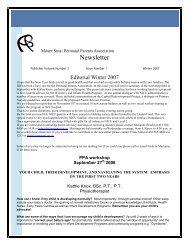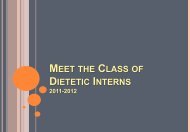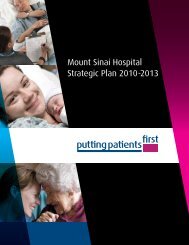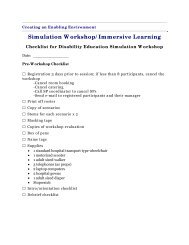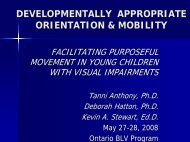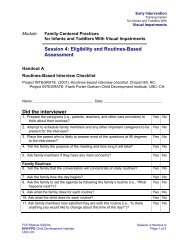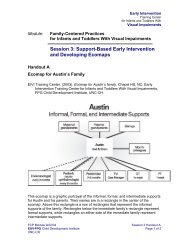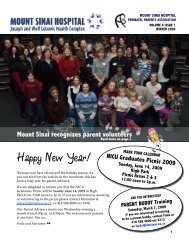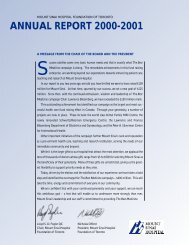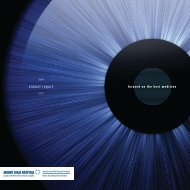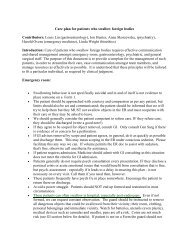Feeding and Nutrition for Your Baby - Mount Sinai Hospital
Feeding and Nutrition for Your Baby - Mount Sinai Hospital
Feeding and Nutrition for Your Baby - Mount Sinai Hospital
You also want an ePaper? Increase the reach of your titles
YUMPU automatically turns print PDFs into web optimized ePapers that Google loves.
At first your baby will have only one or two feeds a day of practice breastfeeding<br />
or non-nutritive sucking. This will gradually increase as the baby gets used to the<br />
extra work of feeding. Because nipple <strong>and</strong> breast feeding requires more work,<br />
babies who have had severe respiratory problems may be slower to start <strong>and</strong><br />
slower to advance on feedings.<br />
Be<strong>for</strong>e your baby is ready to feed by breast or bottle, s/he may enjoy sucking. A<br />
pacifier may be used to encourage sucking. When the baby is being tube fed,<br />
s/he may like to suck on a pacifier dipped in breastmilk, or the breast that is<br />
empty of milk (after pumping). This is called non-nutritive sucking. Sucking on the<br />
empty breast or nuzzling the breast during tube feeding can be combined with<br />
kangaroo care (section “My <strong>Baby</strong>”, page 19). This helps the mother with milk<br />
production <strong>and</strong> readies the baby <strong>for</strong> future breastfeeding. In addition, babies stay<br />
warm while held. Regular visiting <strong>and</strong> h<strong>and</strong>ling of the baby is beneficial <strong>for</strong> milk<br />
supply <strong>and</strong> feeding success.<br />
Reprinted with permission from the University of Wisconsin<br />
2 <strong>Feeding</strong> My <strong>Baby</strong>




